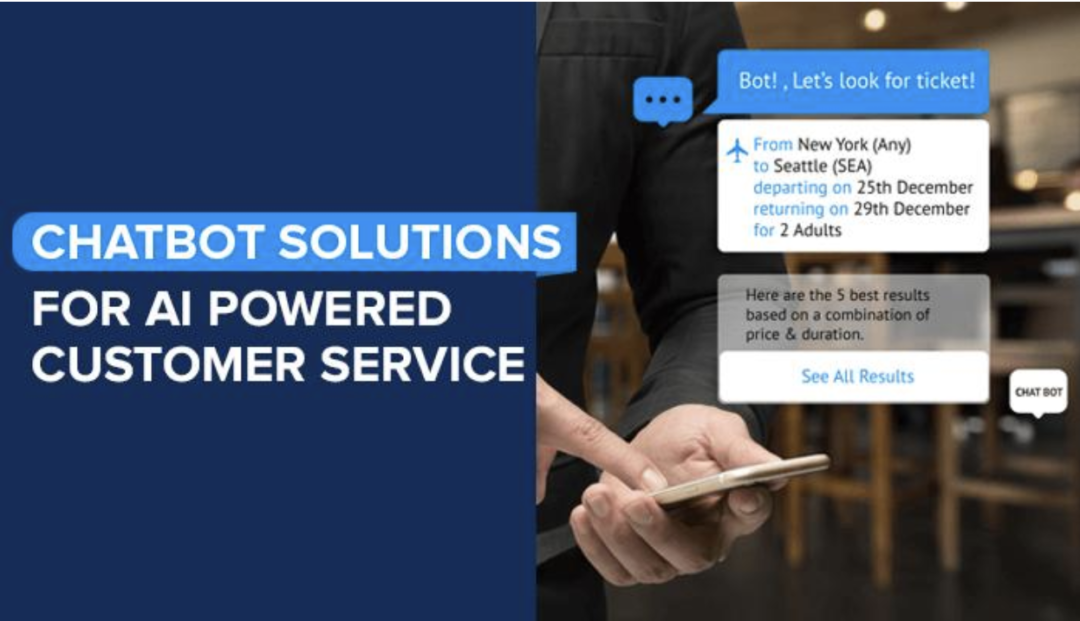Artificial intelligence can automate a large number of processes. Increasingly, the technology is streamlining human intervention between clients and systems.
Chatbot and virtual assistants are emerging examples of AI technology empowering a few non-main stream business operations.
What is a chatbot?
A chatbot is a software hosted by AI, that can replicate an interaction/conversation with a user or client in natural level language through messaging apps or telephone. This is one of the most advanced applications of programming that expresses an interaction between human and a machine.
Technologically, a chatbot solution contains tooling or a chat builder, a NLP (natural language processing) engine to train the bot for business intent and a security and governance platform that will allow the parent company deploying the chatbot to centrally monitor and secure all conversations of an enterprise.
A chatbot solution provider has to take care of all these factors while catering to a business.
See also: NLP to break down human communication: How AI platforms are using natural language processing – Many programs such as chatbots are made possible through the use of natural language processing or NLP. RPA applies it too.
The problem statement:
A considerable amount of human resource is being spent on data entry tasks across ERPs (enterprise resource planning systems), relational databases and mainframe infrastructure. These are attributed to gleaning effective customer services. A study on chatbots from IBM has revealed that businesses can reduce customer service costs by 30% with the usage of conversational interfaces, such as chatbots and virtual assistants powered by AI algorithms.
Further, it is calculated that text interactions cost $5 to $8 per chat; whereas, voice-based interactions cost up to $40 per conversation. This has created a lot of unstructured data sent across systems through emails, chat messages, word, power points, excels and other digital formats.
Human interaction is needed to analyse all the unstructured data and to interpret and enter decisions and actions into the correct system of record.
This process becomes tedious, with increasing category costs and wasted time.
Related: HR, chatbots and robotic process automation – key for digital transformation Organisations must modernise their HR function to succeed in digital transformation efforts. How? Success relies on software automation — chatbots and robotic process automation — and continued human involvement.
The proposed solution:
These problems have created a need for an alternative, yet effective solution that can handle processes right from the categorising stage, to running a suitable process, to closing the conversation. Chatbot solutions providers must be dedicated towards harnessing the capability of such an enterprise solution, making the customer care experience as simple and cost-effective as possible.
Enterprise content management solutions also help along the sidelines to effectively document all the updates. Chatbots combined with such solutions bring forth a rather seamless experience in a business environment.
A chatbot solution provider first has to identify the ‘chat-point’ where the bot has to be deployed. Second, they have to leverage a method to extract user-intent data and entities contained in the user request. Third, the chatbot has to provide the most appropriate response to the identified request. The answer may include a generic or a predefined text from the knowledge base, data stored in enterprise content management systems or an alternate path re-directing to the main menu.
See also: The history of the chatbot- Where it was and where it’s going Chatbots are not new. The software has been around for decades, and now its application is beginning to impact the enterprise — both internally and outward facing.
The challenges:
One challenge in this sector is the security concern that could involve banking details, for example. According to a 2018 press release, it was inferred that a majority of respondents who were asked about chatbots and data breaches, said that they were unwilling to share sensitive information with a chatbot due to security concerns.
Another challenge is the need of human intervention, which is crucial in configuring, training and optimising the chatbot system. A good sense of analytical ability to understand the technology requirements to successfully turn this around depends on the advancements in computing power a chatbot solution provider is equipped with.
How can a business benefit with chatbot implementation?
According to a PwC report, 90% of shoppers believe chatbots can provide accurate text-based information on a product or a service. Retail sectors have a large database of product description information that can be accessed by a chatbot in a few seconds — a likely solution to power retail sales sector.
Irrespective of the industry, chatbots increase productivity by saving time and costing resources. The solution is often analytical, and feasible in a traffic prone e-commerce industry.
Chatbot solutions improves the customer engagement process and operational efficiency by reducing the typical cost of a customer service.
The application of Internet of Things has also proved to be a valuable use case for a chatbot. It allows devices to send updates and alerts whenever misinformation is detected.
How accurate can a chatbot be?
A chatbot’s accuracy is directly dependent on the chatbot solution provider. The underlying script that can support an online help desk application or a promotional IM tool is likely to crash if deviation is attempted.
A trick to enhance efficiency is its ability to pass the Turing Test. Once customers feel that the interaction was with a real person, the utility of a chatbots in B2B or B2C space is likely to grow.
Written by Alex Hales, technical content writer, Clavax Technologies







